The environment of B2B marketing is changing more quickly than before. Businesses that don’t adjust run the risk of falling behind as 2025 progresses. The rules of engagement have altered due to changing buyer expectations and tech-driven strategies, and the winners will be those that keep ahead of the curve.
We at Growthlabs are witnessing directly how forward-thinking B2B companies are using new trends to achieve their goals. You can’t afford to overlook these ten important B2B marketing trends this year.
Table of Contents
1. AI‑Powered Everything: The Engine of Modern B2B Marketing
Artificial intelligence is arguably the most significant trend influencing B2B marketing today. AI is now driving every step of the buyer’s journey, making it more than simply a trendy term. From automating repetitive processes to uncovering data-driven insights, AI fundamentally changes how marketers plan, execute, and optimise campaigns. AI tools are more widely available than ever in 2025. According to McKinsey, more than 55% of businesses currently utilise AI in some capacity, particularly in marketing and sales, with quantifiable and noticeable returns on investment. This accessibility means marketing teams of all sizes can compete at scale, working faster and smarter without needing enterprise-level budgets

Real-world Applications of AI in B2B Marketing
- Predictive Lead Scoring: AI determines the leads most likely to convert by analysing firmographics and historical behaviour. High-intent prospects can be given priority by sales teams, increasing close rates and shortening sales cycles.
- Content Generation: Teams can swiftly generate blog posts, emails, landing pages, and social media material with the help of platforms like ChatGPT, Jasper, and Writer, freeing up marketers to concentrate on strategy and improvement.
- Conversational AI & Chatbots: AI-driven chatbots interact with prospects around the clock, qualifying leads, responding to frequently asked questions, and even setting up calls. They are all connected to your CRM to initiate processes.
- Campaign Optimisation: By utilising real-time user data, tools such as Adobe Sensei, Salesforce Einstein, and HubSpot AI optimise spending, targeting, and creative, instantly modifying tens of thousands of factors.
- Email Personalisation: AI can customise subject lines, send times, and content based on individual behaviour. The result is higher open and click-through rates and better overall engagement.
How to Begin Implementing AI
1. Start with quick wins
Begin with simple, low-risk tasks where AI can immediately save time and effort.
Examples:
Automate repetitive tasks: Let AI help with things like: Generating different versions of emails or social media posts, Testing which subject line works better in an email (A/B testing)
How to do it:
Use tools like Grammarly, ChatGPT, or Jasper to write and rewrite emails, ads, and blog posts. For email testing, most email platforms (like Mailchimp or HubSpot) already include A/B testing features powered by AI.
2. Use integrated platforms
You don’t need to build your AI system. Many marketing and business tools already have AI built in.
Examples of tools:
- HubSpot: Helps you write emails, analyse customer data, and even schedule messages based on when people are most likely to engage.
- Marketo: Uses AI to personalise marketing messages to different audiences.
- ActiveCampaign: Helps automate follow-ups and customer journeys using AI predictions.
How to use them:
- Sign up for one of these platforms (most offer free trials).
- Explore features labelled like “AI Assistant,” “Smart Send,” or “Predictive Analytics.”
- Use help guides or tutorials provided by these tools to get started.
3. Maintain human oversight
AI is helpful, but it’s not perfect. You still need a human touch to make sure everything feels right and reflects your brand.
Why it matters: AI might use wording that doesn’t match your tone. It can make mistakes, especially with facts or cultural sensitivity.
What to do: Always review AI-generated content before publishing it. Think of AI as your assistant—not your replacement. Let it give you ideas, but you make the final call.
4. Track performance
Keep an eye on how well your AI-assisted content is doing. This helps you learn what works and what doesn’t.
Metrics to watch:
- Sales pipeline impact: Is AI helping move leads closer to becoming customers?
- Engagement: Are people opening your emails or clicking on your posts?
- Conversions: Are they signing up, buying, or contacting you?
How to track:
- Use dashboards in platforms like HubSpot or Google Analytics.
- Check weekly reports and compare performance over time.
- If one approach works well, use it again—and if something flops, change it up.
How we can help
AI isn’t just a tech trend; it’s becoming the foundation of effective marketing operations. Early AI adoption gives businesses a competitive edge over rivals who are still using human procedures, stronger audience knowledge, and operational scalability.
We at Growthlabs carefully integrate AI, fusing it with human creativity and data-driven strategy, to help businesses expand more intelligently.
Ready to future-proof your marketing with AI?
2. Humanised Marketing in a Digital World

It’s easy to overlook a crucial fact in a time when marketing discussions are dominated by technology and AI, as people still buy from people. Emotional connection is essential to trust and decision-making, even in business-to-business (B2B) transactions, where purchasing decisions are more logical and process-driven.
Why Humanised Marketing Matters
B2B shoppers are overwhelmed as they are frequently engaged with impersonal machines, get dozens of emails every day, and are targeted by innumerable advertisements. Brands that sound and behave humanely stand out in this crowded market.
According to a Harvard Business Review study, emotionally connected customers are more than twice as valuable as highly satisfied customers. And in B2B, emotional trust and empathy drive decision-making far more than we might assume.
Key Elements of Human-Centric Marketing
- Authentic Storytelling
Share the real story behind your company, your team, and your customers. People relate to challenges, values, and growth, not pretentious catchphrases. Consider customer hardships, founder travels and candid introspection. - Tone of Voice That Feels Personal
Avoid robotic, jargon-filled language. Be clear, self-assured, and conversational when speaking to your audience. People should feel as though they are talking to someone who understands them when they hear your brand tone. - Show the Humans Behind the Brand
Emphasise team members, provide staff viewpoints, or share behind-the-scenes photos. People love seeing who they’re working with, especially in long-term B2B relationships. - Empathy-Led Messaging
Focus on the problems your audience encounters and how you can resolve them rather than promoting product features. Meet them where they are in their journey and show that you get it. - Customer-Centric Content
Publish case studies, endorsements, or videos that tell your clients’ stories rather than just your brand’s capabilities. Honour their victories, not just your physical attributes.
Avoiding the Pitfalls
Being informal or eccentric for the purpose of being so is not what humanised marketing is all about. It all comes down to intentionality. Steer clear of:
- Over-personalisation that feels forced
- “Fun” messaging that falls flat with those who take things seriously
- Empathy automation (such as posing as a human chatbot)
Instead, align tone, message, and intent. The goal is to build trust and credibility by being relatable and transparent.
How to Implement Humanised Marketing
- Audit your messaging: Is your content too technical or impersonal? To make it seem more human, change the vocabulary, tone, and images.
- Bring in your team’s voice: Encourage team members to add to LinkedIn posts, blogs, or videos.
- Focus on the customer: Put the consumer first by changing the focus of the messaging from product features to practical results and emotional rewards.
- Use video where possible: A lengthy technical paragraph is less relatable than a 60-second video featuring an actual person describing a problem.
How we can help
People come back to your brand when they trust it. In lengthy B2B sales cycles, where transactions may take months, brand familiarity and emotional trust are what keep you at the forefront of consumers’ minds. Humanised marketing shortens the distance between awareness and conversion because buyers feel like they’re understood before they’ve even spoken to a salesperson.
At Growthlabs, we combine high-performance digital strategy with a human approach because conversion is ultimately driven by the connection you build, regardless of how sophisticated your technologies are.
Want to build deeper trust with your buyers?
3. The Rise of Buyer Enablement: Empowering the Self-Directed Buyer
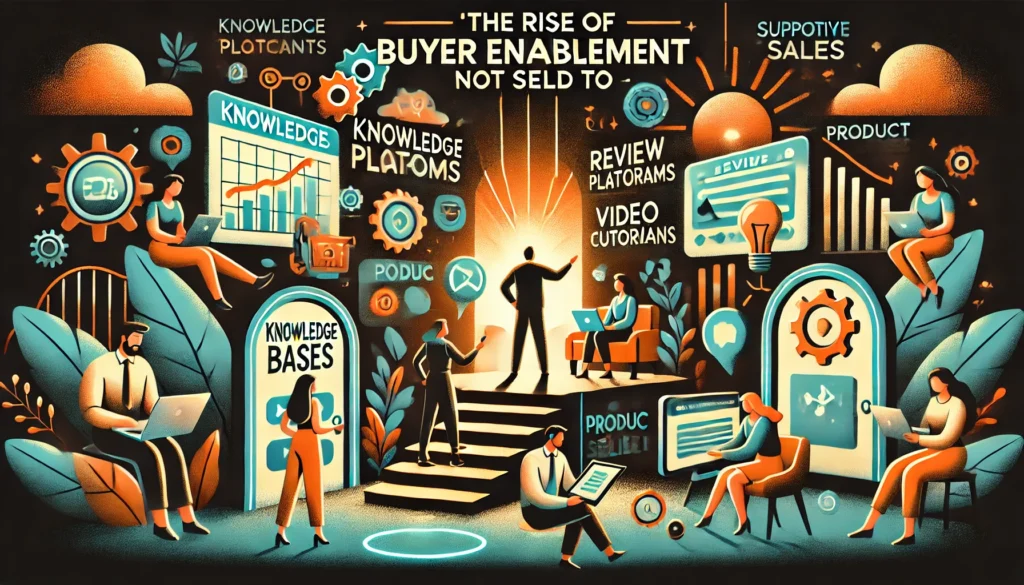
Today’s business-to-business buyer wants to be assisted, not sold to. Prospects no longer primarily depended on sales representatives to help them navigate the sales funnel. Buyers of today are self-reliant, tech-savvy, and do the majority of their research before scheduling a demo.
This shift has given rise to buyer enablement of a marketing strategy focused on providing your audience with the tools, content, and guidance they need to make confident purchasing decisions on their own terms.
In fact, B2B buyers’ total purchasing time is currently spent meeting with sales representatives, according to Gartner. Internal conversations and independent research take up the remaining time. This has a straightforward but important implication for marketers: the more useful and approachable your material is, the more likely you are to close the purchase.
What Is Buyer Enablement?
The technique of providing resources and information to help prospects navigate their decision-making process with the least amount of difficulty is known as buyer enablement. The goal is to guide and support, not to promote a product.
Effective buyer enablement includes:
- Interactive product comparison tools
- ROI calculators and budget justification templates
- On-demand video demos or walkthroughs
- Customer success stories and peer reviews
- Self-service knowledge bases and FAQ hubs
- Use-case-specific landing pages or solution guides
“Is this the right solution for us, and can we justify it internally?” is a question that every buyer has, and these tools help address it.
Why It Works
When done well, buyer enablement leads to:
- Faster sales cycles by reducing reliance on sales reps
- Increased trust through transparency and educational content
- Higher-quality leads, as prospects are more qualified before engaging with your team.
- Lower acquisition costs by shifting the heavy lifting to content, not headcount
In essence, it gives your potential customers the confidence they need to say “yes” often before they’ve spoken to anyone at your company.
How to Build a Buyer Enablement Framework
- Map the buyer journey: Identify every stage a prospect goes through from awareness to decision and what questions or objections they may have along the way.
- Audit your current assets: Do you have tools or content that answer these questions? Are they easy to find and easy to use?
- Create assets for self-service:
- Top of funnel: Educational blog posts, industry guides, and checklists
- Middle of funnel: Case studies, comparison charts, demo videos
- Bottom of funnel: ROI calculators, implementation roadmaps, objection-handling content
- Top of funnel: Educational blog posts, industry guides, and checklists
- Ensure accessibility: Make sure content is easy to navigate, mobile-friendly, and not buried behind unnecessary gates unless it’s part of a lead generation strategy.
- Enable your sales team: Equip them with tailored enablement content they can share in conversations, while marketing focuses on self-serve pathways.
Common Mistakes to Avoid
- Over-gating content: If everything requires a form fill, you’re adding friction instead of removing it.
- Creating assets in isolation: Buyer enablement is most effective when integrated across marketing, sales, and customer success.
- Ignoring post-sale enablement: Your content shouldn’t stop after the contract is signed. Help new customers onboard and grow with your solution.
How we can help
Consider building a dedicated buyer enablement hub on your website, an easily accessible library of tools and resources that mirrors the full decision journey. Group content by industry, role, or use case to help visitors quickly find what’s relevant to them.
At Growthlabs, our speciality is creating digital journeys that empower rather than overwhelm business-to-business (B2B) buyers. By including enablement in your marketing plan, you’re helping prospects make informed decisions rather than merely providing them with information.
Customers are more likely to select and remain loyal to the brand that made their journey easier when they feel in control.
Want to make buying easier for your prospects?
4. Smarter, Scalable Personalisation: The New Standard in B2B Marketing
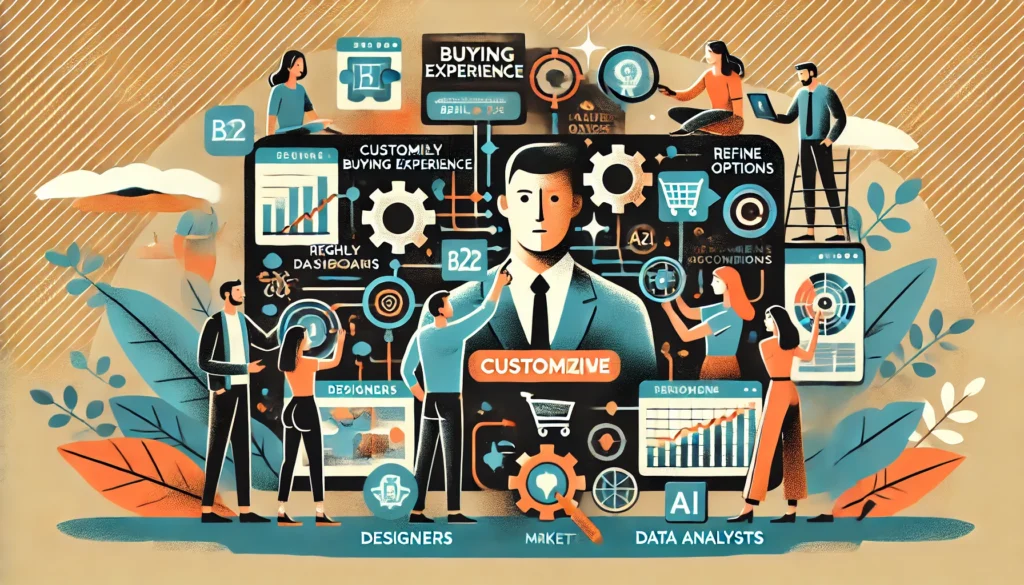
B2B buyers want customised experiences that are as relevant and easy to use as B2C platforms in today’s digital-first environment. Personalisation is becoming more than just a “nice to have”; it is a crucial component of increasing engagement, fostering trust, and increasing conversions.
By 2025, however, personalisation goes beyond simply addressing a contact by name in an email. Based on real-time data, behaviour, industry, and account history, the entire marketing experience, including website content, emails, advertising, and offers, must be dynamically adjusted. Showing each prospect exactly what they need, when they need it, and in the format that suits them best is the straightforward objective.
Why Personalisation Works
B2B buyers nowadays are research-driven and time-constrained. They will move on if your content doesn’t immediately address their wants. Actually, 80% of consumers are more willing to interact with a brand that provides individualised experiences, and business-to-business (B2B) purchasers are no exception, according to Epsilon.
When personalisation is done right, it delivers:
- Higher engagement rates
- Better lead quality
- Increased deal velocity
- Stronger customer retention
What Scalable Personalisation Looks Like
- Smart Segmentation
Segment your audience based on engagement history, purchase intent, and behavioural cues in addition to industry and job title. - Dynamic Website Content
Depending on a visitor’s profile or surfing history, you can display alternative calls to action, testimonials, and text using dynamic website content personalisation solutions like Mutiny, Adobe Target, or HubSpot Smart Content. - Behaviour-Triggered Emails
Use behaviour-based triggers (such as viewing a pricing page or downloading a whitepaper) to send timely, pertinent emails that cater to particular requirements rather than launching bulk campaigns. - Customised Ad Creative
Platforms like LinkedIn Ads and programmatic networks now allow dynamic ad copy and creative based on firmographics, allowing your ads to speak directly to the viewer’s industry, company size, or stage in the buyer journey. - Role-Based Nurture Flows
Tailor drip campaigns by job function. For example, a CMO might receive ROI-focused content, while a marketing manager receives tactical implementation guides.
How to Get Started
- Clean your data: Good personalisation relies on accurate, complete data. Ensure your CRM and marketing platform are synced and updated.
- Define key personas: Build detailed buyer personas with firmographics, challenges, and goals.
- Map out personalised journeys: Create parallel content tracks for different personas, industries, or buying stages.
- Use AI to scale: AI-powered tools can automate content variation, timing, and channel delivery to make your campaigns more effective with less manual effort.
Avoiding Common Pitfalls
- Too much, too soon: Don’t overwhelm users with aggressive personalisation, start with the most critical touchpoints and scale gradually.
- Ignoring content strategy: Personalisation only works if the content behind it is useful and high-quality.
- Siloed data: If your data is scattered across platforms, your personalisation efforts will fall flat. Integration is key.
How we can help
What sets contemporary B2B companies apart from those who are mired in one-size-fits-all strategies is scalable customisation. Your marketing increases engagement, fosters trust, and speeds up decision-making when it feels like it was created just for each prospect.
We at Growthlabs assist companies in developing automated personalisation frameworks that provide the appropriate message to the appropriate individual without exhausting your workforce. Because relevance isn’t optional anymore, it’s expected.
Show every lead they matter
5. ABM is Going Mainstream: Precision Targeting for the Masses
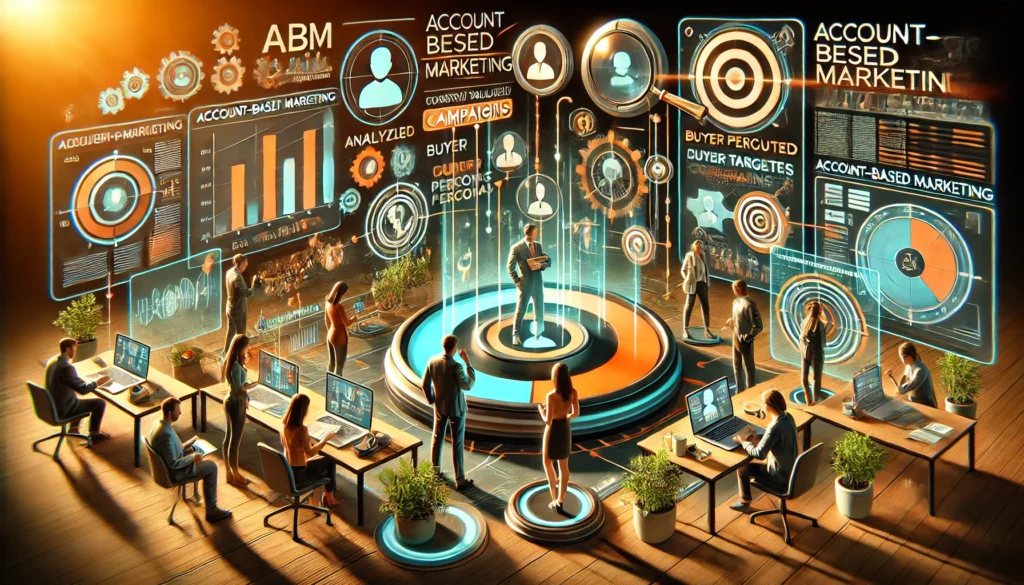
The gold standard for business B2B sales for a long time has been Account-Based Marketing (ABM), which unites marketing and sales to concentrate on high-value accounts with tailored, targeted campaigns. However, by 2025, big businesses will no longer be the only ones using ABM. ABM is now a feasible and very successful strategy for SMEs and mid-market organisations as well, thanks to enhanced platforms, automation tools, and easily accessible data.
Why ABM Works
Volume is the main focus of traditional lead-generation strategies, which fill the top of the funnel, qualify prospects, and then nurture. However, ABM is the opposite. Finding your most valuable accounts is the first step, after which you create outreach, content, and journeys just for them.
This approach delivers:
- Higher ROI than traditional demand generation
- Stronger alignment between marketing and sales
- Shorter sales cycles with higher win rates
- Deeper engagement with decision-making units (DMUs)
ABM performs better than all other marketing investments, according to ITSMA.
What’s Driving ABM’s Rise in 2025
- Affordable tools: HubSpot, Terminus, Demandbase, and RollWorks are just a few of the platforms that provide ABM features for expanding businesses.
- Intent data availability: Tools such as 6sense and Bombora offer indications of which accounts are in-market, which improves the accuracy and intelligence of targeting.
- AI and automation: With AI, you can now use triggered email journeys, dynamic advertisements, and personalised content at scale without overloading your workforce.
- Improved integrations: ABM solutions may now more readily link to sales tools and CRMs, which facilitates execution and increases tracking accuracy.
How to Get Started with ABM
- Define your Ideal Customer Profile (ICP): Use existing customer data to identify industries, company sizes, and job roles that deliver the best value.
- Align sales and marketing: ABM success depends on collaboration. Build shared goals, workflows, and feedback loops.
- Choose your tiering strategy: Not all accounts need the same level of investment. Prioritise Tier 1 accounts for 1:1 content and Tier 2/3 with semi-automated plays.
- Track everything: Use attribution tools to measure account engagement, pipeline progression, and revenue impact.
Common Pitfalls to Avoid
- Lack of coordination: If marketing and sales aren’t on the same page, ABM becomes just another campaign.
- Over-personalisation at scale: Not every account needs hyper-specific assets—find the balance between relevance and efficiency.
- Neglecting non-buyers: ABM isn’t just about reaching one contact—it’s about influencing the entire buying committee.
How can we help
At Growthlabs, we assist companies in implementing data-driven, scalable, and targeted ABM programs. We’ll help you tailor your marketing without sacrificing momentum, whether you’re aiming for 500 important accounts or only 10.
Because reaching the right people is more important in B2B today than reaching more people.
Start winning more high-value deals
6. Thought Leadership That Educates: Building Trust Through Insight

In 2025, providing genuine educational value that aids in your audience’s decision-making is what thought leadership is all about, not just expressing an opinion. Since most B2B customers do their own research, brands that lead with substance rather than self-promotion are the ones gaining credibility and confidence.
Your thought leadership material must do more than just touch the surface, though, if you want to stand out. It should be precise, grounded in your particular area of knowledge, and supported by evidence. It’s about helping others solve problems more efficiently, not about flaunting your knowledge.
Why Educational Thought Leadership Matters in B2B
The decision-makers of today are inundated with generic content. They are looking for meaningful, experience-based knowledge that clarifies difficult subjects or offers them a fresh perspective on a problem; they are not looking for filler.
According to Edelman and LinkedIn’s 2022 B2B Thought Leadership Impact Study, 61% of decision-makers say thought leadership is more effective at assessing a vendor’s capabilities than traditional marketing materials. Furthermore, 64% say it increases their trust in a company.
That means great thought leadership:
- Positions your team as industry experts
- Accelerates the buyer journey by building confidence
- Attracts qualified leads through organic search and social sharing
- Strengthens your brand’s voice in a competitive market
What Effective B2B Thought Leadership Looks Like
- Original Research & Data-Backed Insights
Your brand becomes an authority when you publish first-party data (such as surveys, platform insights, or benchmarks). For instance, “2025 Trends in B2B Lead Generation” with useful statistics will get greater interest than general guidance. - Strategic How-To Content
Think beyond surface-level tips. Publish guides that break down processes like building an ABM strategy, navigating data compliance, or aligning marketing with revenue teams. These deepen engagement and offer real value. - Industry Commentary
Expressing your thoughts on changes or trends in your area demonstrates your involvement in the discussion. Whether in blogs, podcasts, or LinkedIn posts, provide an opinion that adds meaning rather than clutter. - Founder or Team Voices
Allow your in-house specialists to express their opinions. Hearing directly from the individuals who created the product or service boosts buyer trust. It gives your brand a human face and sets you apart from anonymous rivals. - Guest Contributions & Collaborations
Partner with clients, influencers, or aligned service providers to co-create articles, webinars, or LinkedIn Lives. This cross-pollination expands reach and boosts credibility.
How to Build a Scalable Thought Leadership Strategy
- Define your content pillars: Choose 3–5 strategic topics your brand wants to be known for. Align them with your solution and your audience’s core challenges.
- Develop a content engine: Use blogs, video, LinkedIn posts, and long-form assets like reports or guides to distribute thought leadership consistently.
- Invest in consistency over virality: The goal isn’t to “go viral” once. It’s to show up reliably with relevant, helpful ideas over time.
- Optimise for discoverability: Thought leadership should drive traffic. Use SEO best practices, strong metadata, and internal links to make it discoverable.
Avoid These Pitfalls
- Vague, high-level content: If it doesn’t teach something new or provoke thought, it’s not thought leadership.
- Over-promotion: Educate first. Don’t turn every piece into a pitch.
- Infrequent publishing: Building authority requires consistency. Sporadic posts won’t build momentum.
How can we help
At Growthlabs, we assist B2B companies in producing and disseminating thought leadership that has a significant impact and generates pipeline in addition to views. We make sure your insights are viewed, trusted, and remembered whether you’re creating reports, establishing a C-level LinkedIn presence, or launching a content centre.
Because teaching is the most effective technique to sell in B2B.
Become the voice of your industry that trusts
7. The Shift to Short-Form Video: Bite-Sized Content, Big Impact
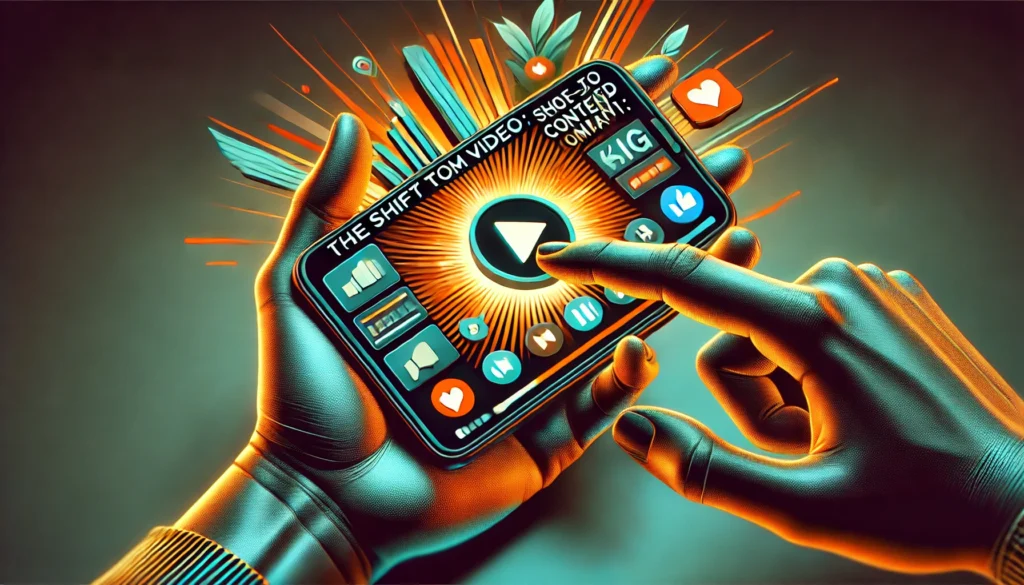
Although short-form video has become the preferred format in 2025, video has long been a potent weapon in the toolbox of B2B marketers. We no longer consume content in the same way. Decision-makers have higher expectations, shorter attention spans, and demand speedy delivery of value.
Short-form videos, whether they be product teasers, customer testimonials, expert insights, or instructional snippets, reach prospects where they are: when they are browsing LinkedIn on their mobile device, reading newsletters, or searching for social proof prior to scheduling a call.
Today’s most engaged brands are those that make investments in quick, targeted, and relatable video content.
Why Short-Form Video Works in B2B
Short-form video (typically under 90 seconds) is:
- Easy to consume
- Highly shareable
- Ideal for mobile-first consumption
- Versatile across platforms (LinkedIn, YouTube Shorts, Instagram Reels, email, and websites)
According to Wistia, short videos (under 2 minutes) have the highest engagement rates and are 50% more likely to be watched to completion. For a B2B audience, where attention is scarce, that’s significant.
And in complex sales cycles, video offers a personal, trust-building layer that text alone can’t replicate.
Use Cases for B2B Short-Form Video
- Product Highlights & Feature Demos
Show what your platform or service does in action. A 60-second walkthrough builds far more trust than paragraphs of text. - Customer Testimonials
Capture authentic feedback with quick, interview-style clips. These add credibility and bring case studies to life. - Thought Leadership Snippets
Share bite-sized takes from your CEO, strategists, or subject matter experts—ideal for building a following on LinkedIn. - Behind-the-Scenes Culture Videos
Showcase your team, values, or events. This humanises your brand and is especially effective in employer branding and long-term relationship building. - FAQ Explainers
Turn common sales or onboarding questions into short, searchable videos that support both marketing and customer success.
Tips for Effective Short-Form Video
- Hook early: The first 3 seconds matter most. Open with a question or problem statement.
- Keep it focused: One video = one idea. Don’t overload it with features or jargon.
- Include captions: Over 80% of B2B video is watched on mute, especially on mobile and LinkedIn.
- End with a next step: Even a simple CTA like “Learn more” or “Connect with us” gives viewers direction.
How to Distribute Short-Form Video
- Post natively on LinkedIn with relevant hashtags.
- Embed in email campaigns or newsletters.
- Add to landing pages to increase time on page.
- Repurpose across platforms: Instagram Reels, YouTube Shorts, TikTok (yes, even for B2B)
How can we help
Without making it too complicated, we at Growthlabs assist B2B companies in incorporating short-form video into their marketing mix. We concentrate on straightforward, powerful formats that establish credibility and add value where it counts most.
Because a well-timed, incisive video can convey more information in 30 seconds than a thousand words ever could when your viewer is scrolling quickly.
Want to engage buyers faster?
8. Intent Data is Driving Targeting Precision: Reaching Buyers Before They Reach You
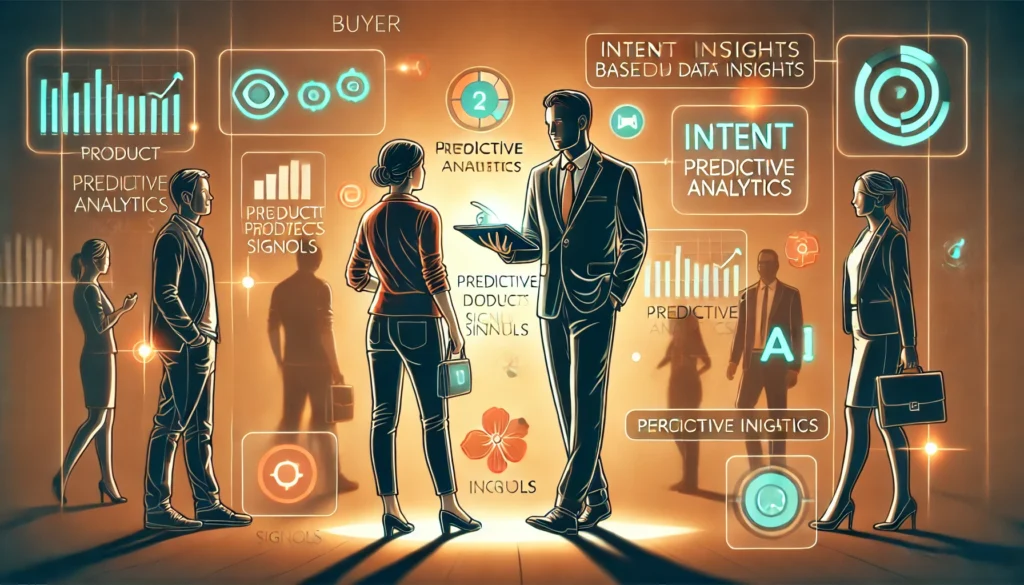
When it comes to B2B marketing, time is crucial. It can make the difference between striking up a discussion and being ignored if you contact a prospect while they are actively looking into a solution similar to yours. Here’s where intent data comes into play.
By 2025, more marketers will be using behavioural indicators rather than only firmographics to find potential customers before they even submit a form or ask for a demo. With intent data, you’re responding to actual purchasing behaviour rather than speculating about who to target.
The outcome? A quicker route to revenue, better targeting, and higher-quality leads.
What Is Intent Data?
Intent data tracks and interprets the online behaviours that indicate a company is actively considering a purchase. This could include:
- Frequent visits to solution-related websites
- Searches for competitor names or product categories
- Consumption of content on third-party review sites
- Downloading whitepapers or viewing specific topics repeatedly
By identifying these patterns, intent data helps marketers prioritise outreach to companies that are actually in-market, not just a match on paper.
Types of Intent Data
- First-Party Intent
Behaviour on your own digital properties page views, downloads, chat interactions, etc. This data lives in your CRM or marketing platform and offers insight into known visitors. - Third-Party Intent
Data from external platforms like G2, Bombora, or 6sense, which track broader web activity to detect research trends and surging interest in specific topics or competitors. - Purchase Intent from Review Sites
Platforms like TrustRadius and Capterra can indicate when prospects are comparing you to competitors, offering a critical opportunity to get in early.
How to Use Intent Data Effectively
- Prioritise outbound outreach
Provide sales teams with a shortlist of high-intent accounts that are already searching for your kind of service as an alternative to cold prospecting.. - Trigger nurture campaigns
Send hyper-relevant content, such as case studies, comparisons, or industry benchmarks, to buyers to aid in their evaluation when intent spikes are identified.. - Customise ad targeting
Target accounts displaying particular intent subjects with tailored campaigns. For an extremely effective ad spend, combine intent signals with ABM. - Improve lead scoring
To differentiate between active purchasing behaviour and passive interest, incorporate intent signals into your scoring model.
Tips for Integrating Intent Data
- Define your use cases: Don’t buy intent data just to have it—decide how it’ll power specific campaigns, ad strategies, or sales plays.
- Align sales and marketing: Sales needs to trust the data. Provide context, and track outcomes tied to intent-driven outreach.
- Use thresholds: Set trigger points (e.g., “3 or more signals in 7 days”) to avoid false positives or wasted effort.
Avoid Common Mistakes
- Overrelying on intent alone: Use it as part of a broader data strategy—not the sole targeting criterion.
- Failing to act quickly: Intent data decays fast. If a prospect’s interest spikes this week, next week may be too late.
- Forgetting to personalise: Just because someone’s researching your category doesn’t mean generic messaging will work. Make your outreach relevant to their intent signals.
How can we help
Growthlabs assists business-to-business (B2B) marketers in using intent data to make more informed decisions by locating high-potential accounts and delivering the appropriate message to them at the ideal time.
Because you need the correct leads at the right time, not more, in today’s market.
Stop guessing, start anticipating
9. Privacy-First Marketing is a Competitive Advantage: Earning Trust in a Cookieless World
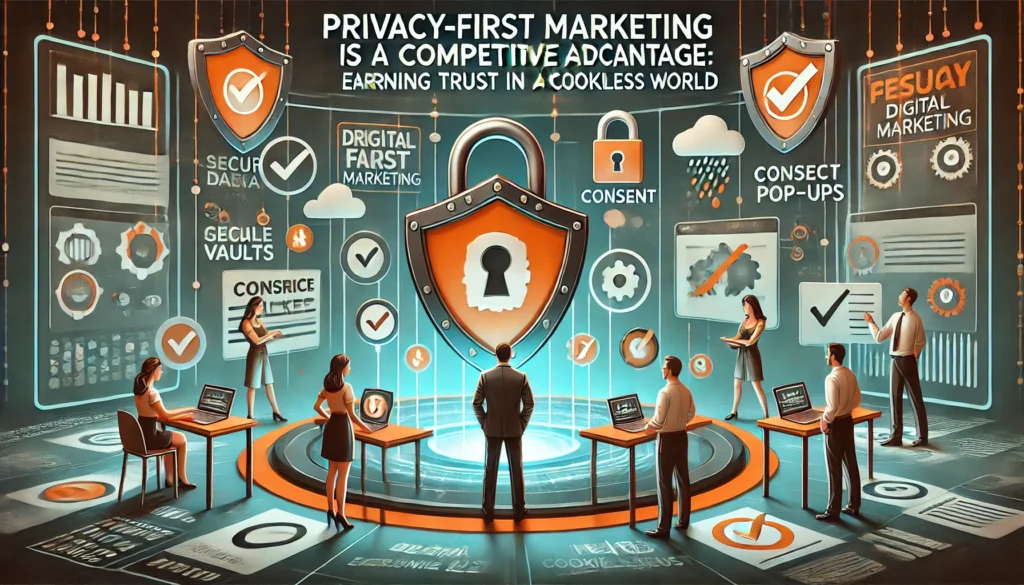
Data privacy is now a differentiator for brands, not merely a legal checkbox. By 2025, business-to-business purchasers will be more conscious of the ways in which their data is gathered, saved, and utilised. Marketers need to adopt a privacy-first approach as third-party cookies become less common and global data rules (such as the CCPA and GDPR) become more stringent.
Gaining trust is more important than merely complying. Additionally, influence in B2B marketing is equal to trust.
Better engagement, greater customer loyalty, and fewer conversion barriers are being observed by brands that use moral, open data practices and establish partnerships based on consent.
Why This Matters Now
Third-party cookies are finally being phased out by Google. Apple has modified the way that email tracking operates. Regulators are still cracking down on tactics that use ambiguous data. Additionally, consumers are more dubious than before.
According to a recent Cisco Consumer Privacy Survey, 86% of respondents worry about data privacy, and 79% are willing to act by switching providers or refusing to give consent if they feel their data is mishandled.
Therefore, brands that earn data rather than extract it will be the ones that succeed in the next phase of B2B marketing.
What Does Privacy-First Marketing Look Like?
- First-Party Data Collection
Build your database from people who willingly engage with your brand—via newsletter opt-ins, gated content, demo requests, or event registrations. - Clear Consent and Preferences
Let users choose what they want to receive, how often, and through which channels. Preference centres are no longer optional, they’re expected. - Transparent Messaging
Tell users exactly why you’re collecting their data and how it will be used. Transparency builds credibility and helps you stay compliant. - Smarter Lead Qualification
Replace forms that demand excessive personal info with progressive profiling, where details are collected gradually as trust grows. - Cookieless Targeting Strategies
Leverage contextual advertising, intent data, and account-based targeting to reach audiences without relying on third-party cookies. - Secure Data Infrastructure
Invest in platforms and tools that meet today’s security standards. The risk of data breaches isn’t just financial—it’s reputational.
Steps to Implement a Privacy-First Strategy
- Audit your current data practices: Identify where data comes from, how it’s used, and where consent is missing or unclear.
- Segment and clean your database: Remove stale or non-compliant records. Focus on high-quality, opt-in contacts.
- Revamp your lead gen forms: Be transparent. Ask only what you need and offer value in exchange.
- Align with legal and compliance teams: Marketing doesn’t operate in a vacuum—work cross-functionally to stay compliant and aligned.
- Educate your audience: Make privacy part of your brand promise. Show them how their trust is protected.
What to Avoid
- Over-reliance on tracking pixels or unconsented cookies: As browsers clamp down, your data may be less reliable than you think.
- “Dark patterns” that trick users into consenting: These may yield short-term data but damage brand trust long-term.
- Ignoring updates to global regulations: Laws like GDPR, CCPA, and others are evolving—non-compliance is risky and costly.
How can we help
At Growthlabs, we assist B2B companies in creating trust-first marketing strategies where performance and transparency coexist. Privacy is a brand promise as well as a legal requirement. And that promise gives you an advantage in a market where consumers are more wary.
Because in 2025 and beyond, customers will remain loyal to companies that respect their privacy.
Make privacy your brand’s superpower
10. Multi-Touch Attribution is the New Standard: Knowing What Actually Drives Revenue
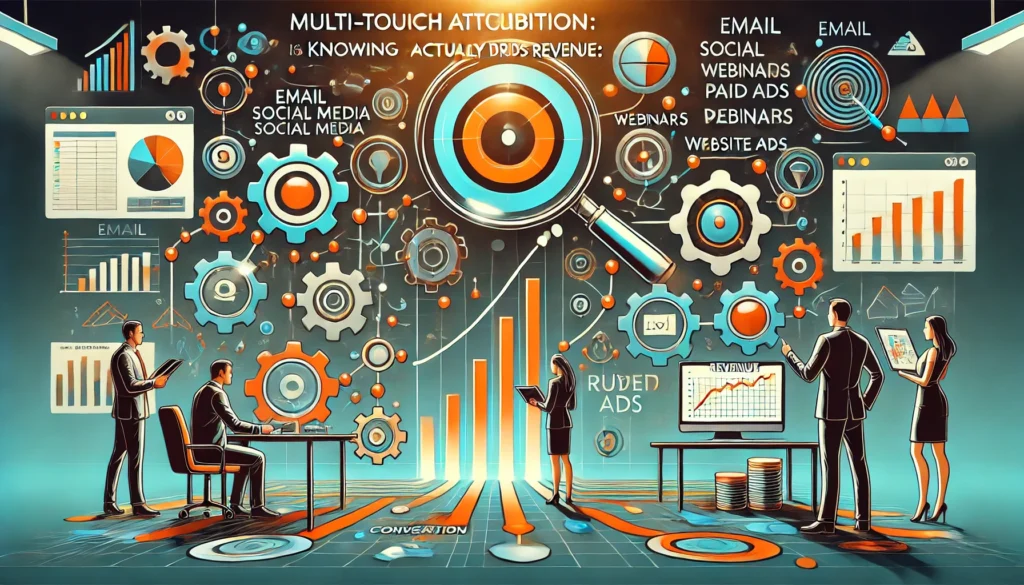
The typical B2B buyer experience is lengthy, intricate, and infrequently straightforward. Before making a choice, prospects may interact with a variety of touchpoints, including advertisements, blogs, webinars, email campaigns, LinkedIn posts, and sales discussions. You’re only seeing part of the picture if you’re still depending on last-click attribution to figure out what’s working.
Leading marketers are switching to multi-touch attribution in 2025, which takes into consideration all of the significant interactions a customer has with your company throughout the funnel. It’s not about giving the last click all the credit. It all comes down to knowing how each touchpoint helps build pipelines and generate income that has been earned.
Why This Shift Matters
As marketing channels multiply and B2B decision-makers become more independent, knowing which efforts influence buying decisions is essential for:
- Allocating budget effectively
- Understanding true ROI across campaigns
- Prioritising high-impact channels
- Aligning marketing with revenue, not just leads.
According to HubSpot’s comprehensive guide, multi‑touch attribution gives marketers visibility into how each touchpoint contributes to conversion—creating a clearer picture than outdated single‑touch models.
What Is Multi-Touch Attribution (MTA)?
Multi-touch attribution distributes credit across all marketing activities that influence a buyer’s journey. Rather than assigning 100% credit to a single point (like first-click or last-click), it shows the contribution of multiple interactions.
Common MTA models include:
- Linear – Equal credit to all touchpoints
- Time-Decay – More credit to touchpoints closer to conversion
- Position-Based (U-Shaped) – Credit shared between the first and last touchpoints, with some for the middle.
- Custom – Weighted models based on business logic or data-driven algorithms
Key Benefits of MTA
- More strategic budget allocation – Stop overspending on channels that only close the deal, and start funding the ones that create demand early.
- Deeper funnel visibility – See which content types, campaigns, and events nurture leads best.
- Better sales-marketing alignment – Tie marketing influence directly to pipeline and closed deals, not just vanity metrics.
Challenges to Watch For
- Data silos: Attribution only works when data flows between your CRM, ads platform, and marketing tools.
- Overcomplication: Don’t let attribution modelling slow you down. Start with simple frameworks, then iterate.
- Analysis paralysis: Use MTA insights to drive action—not just reporting dashboards.
How to Get Started
- Audit your funnel: Identify all your major marketing touchpoints across the buyer journey.
- Select a model that fits: Linear or time-decay are great starting points before moving to custom attribution.
- Integrate your systems: Connect your CRM, ad platforms, website analytics, and automation tools for a single source of truth.
- Build the habit: Review attribution data regularly. Use it to inform campaign planning, content creation, and budget decisions.
How we can help
At Growthlabs, we use attribution models that mirror the behaviour of contemporary consumers to assist customers in moving from speculation to growth. You make better decisions and get more out of every pound you spend on marketing when you know what really drives the pipeline.
Because in today’s B2B world, if you can’t quantify it, you can’t scale it.
Get clear on what’s really working
